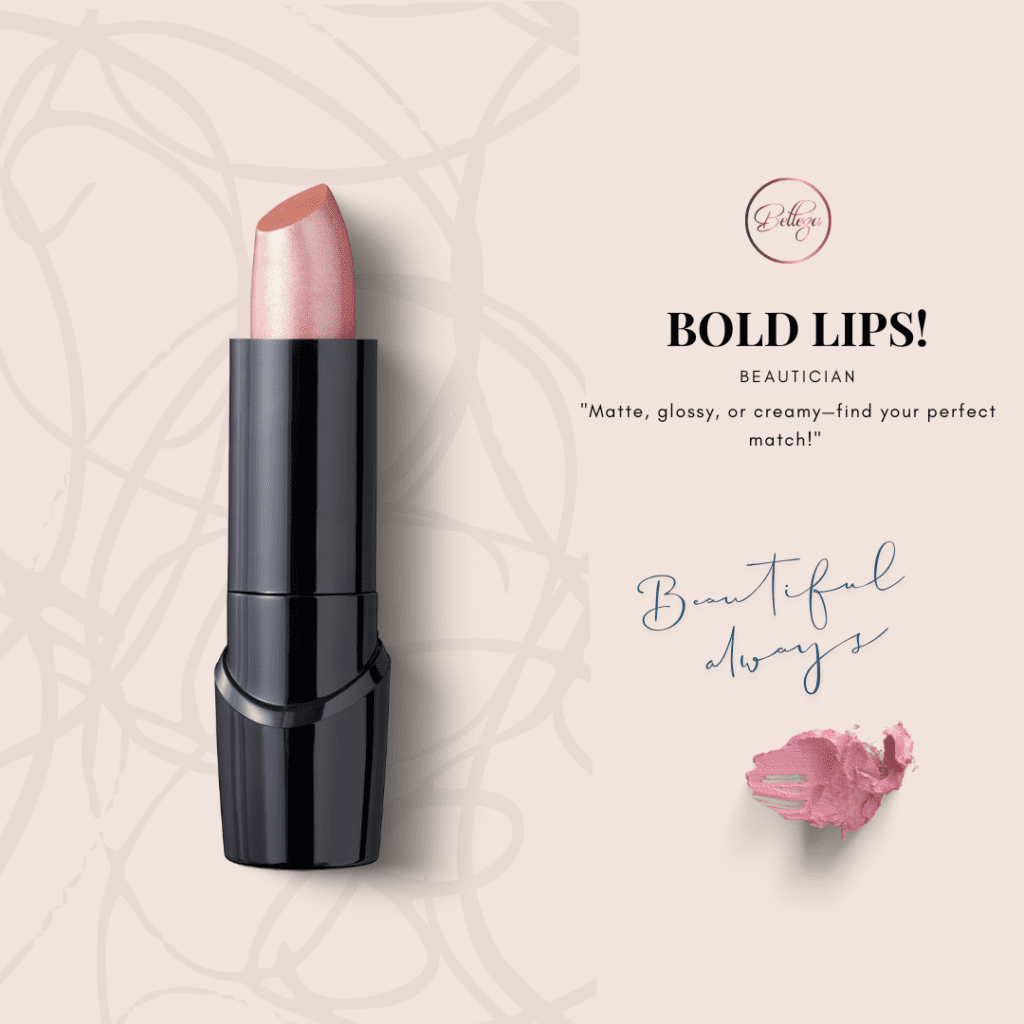
LIPSTICKS TRY-ON TOOLS AND TIPS
HOW TO CHECK QUALITY
It’s tough to do a comprehensive chemical analysis of lipstick at home without a lab! However, here are 5 practical methods you can use to get a better idea about the potential for harsh chemicals in your lipsticks:
Read the Ingredient List Carefully:
What to look for: This is the most important step! Become familiar with common harsh chemicals found in lipsticks. Red flag ingredients to watch out for include:
Parabens (e.g., Methylparaben, Propylparaben): Preservatives that can be endocrine disruptors.
Phthalates (e.g., DBP, DEP, DEHP): Plasticizers that can also be endocrine disruptors.
Lead: A heavy metal contaminant (often not listed, but a concern, especially in older or cheaper brands).
Synthetic Fragrances: Can contain a cocktail of undisclosed chemicals that may cause irritation or allergies. Look for “fragrance” or “parfum” without further details. Natural essential oils are generally okay.
Coal Tar Dyes (e.g., FD&C Red No. 40, D&C Yellow No. 5): Synthetic colorants derived from petroleum, some of which are linked to health concerns.
Formaldehyde-releasing preservatives (e.g., DMDM Hydantoin, Diazolidinyl Urea): Release formaldehyde, a known carcinogen.
How to do it: Take the time to carefully read the ingredient list on the lipstick packaging or the brand’s website. Look up any ingredients you’re unsure about on resources like the Environmental Working Group’s (EWG) Skin Deep database (more on that below).
Limitations: Ingredient lists can be incomplete or use confusing terminology. Also, some contaminants (like lead) may not be listed.
Use the EWG’s Skin Deep Database:
What it is: The Environmental Working Group (EWG) has a Skin Deep database (www.ewg.org/skindeep) that rates cosmetic ingredients and products based on potential health hazards.
How to do it: Search for the lipstick brand and product name in the EWG Skin Deep database. The database will provide a hazard score based on the ingredients and their potential health effects. You can also search for individual ingredients to learn more about their safety.
Limitations: The EWG database relies on publicly available scientific data, which may be limited for some ingredients. The ratings are also based on potential hazards, not necessarily actual risk.
Perform a Patch Test:
What it is: A simple test to check for allergic reactions or irritation.
How to do it: Apply a small amount of the lipstick to a discreet area of your skin, such as the inside of your wrist or elbow. Cover the area with a bandage and leave it for 24-48 hours. Check for any signs of redness, itching, burning, or swelling. If you experience any of these symptoms, discontinue use.
Limitations: A patch test only detects allergic reactions or irritations, not long-term health effects from chemical exposure.
Smell Test:
What it is: Assessing the scent of the lipstick.
How to do it: Give the lipstick a sniff. A strong, artificial, or chemical-like odor could indicate the presence of synthetic fragrances or other harsh chemicals. A more natural or subtle scent is generally preferable. Be aware that some lipsticks have added fragrance to mask other odors.
Limitations: This is a subjective test. Some natural ingredients can also have strong smells.
Observe the Texture and Performance:
What to look for: Consider how the lipstick feels on your lips and how it performs over time.
How to do it:
Texture: A lipstick that feels very dry, waxy, or heavy may contain ingredients that are not skin-friendly.
Wear Time: Lipsticks that claim extremely long wear times often contain higher levels of synthetic polymers and preservatives.
Lip Condition: Pay attention to how your lips feel after wearing the lipstick. If they feel dry, chapped, or irritated, it could be a sign that the formula contains harsh chemicals.
Limitations: This method is subjective and can be influenced by individual skin sensitivity.

TIPS AND TRICKS!
Application Tips for All Natural Lipsticks:
Exfoliate: Use a gentle lip scrub to remove dead skin cells for a smooth application.
Hydrate: Apply a lip balm to moisturize lips before applying lipstick.
Lip Liner: Use a natural lip liner to define your lips and prevent feathering.
Blotting: Blot with a tissue to remove excess product and increase longevity.
Application Method: Use a lip brush for precision and even coverage, especially with bold shades.
TYPES OF LIPSTICKS AND CONSIDERATIONS
Nude Glossy Lipstick: This is a popular everyday choice:
- Application: To avoid a “washed-out” look, choose a nude shade slightly deeper than your natural lip color. Pair with a lip liner close to your lip’s natural tone to define the edges and prevent the color from bleeding. Blot with a tissue for a more matte look, and apply more gloss as needed.
- What to Avoid: Be wary of nude shades with too much white pigment, which can make lips look chalky. Ensure the formula is moisturizing to prevent dryness.
Best Smudge-Proof Lipstick: Achieving a truly smudge-proof finish with natural ingredients can be challenging.
- Application: Start with exfoliated and hydrated lips. Apply a thin layer of lipstick, blot with a tissue, and apply a second thin layer. Some people have found using a translucent powder on the lips after blotting before the second application increases the wear time.
- What to Avoid: Over-applying the product can lead to smudging. Avoid oily foods, as they can break down the formula. Consider a natural lip liner to create a barrier against smudging.
Organic Red Lipstick : A classic, bold statement with a focus on clean ingredients.
- Application: Red lipstick demands precision. Use a lip liner in a matching shade to define your lips and prevent feathering. Apply the lipstick with a lip brush for even coverage. Blot with a tissue to remove excess and then reapply another thin layer.
- What to Avoid: Avoid red lipsticks with synthetic dyes or heavy metals. Choose organic formulations with natural pigments for a safer option. Ensure the red complements your skin tone.
Long-Lasting Natural Lipstick: The holy grail of natural beauty – color that lasts without compromise.
- Application: Exfoliate and hydrate lips thoroughly before application. Use a lip primer or base to create a smooth canvas. Apply thin layers of lipstick, blotting between each layer.
- What to Avoid: Many “long-lasting” lipsticks rely on synthetic polymers and preservatives. Prioritize formulations with natural waxes and oils that create a film on the lips. The longer you wait before eating or drinking, the better.
KEEP IN MIND

Important Considerations:
“Natural” Doesn’t Always Mean Perfect: Read ingredient lists carefully. Even “natural” brands can contain ingredients some individuals may wish to avoid.
Patch Test: Always test a new lipstick on a small area of skin before applying it to your entire lips to check for allergies or irritation.
Research & Reviews: Before purchasing, research brands and read reviews from other customers to get a sense of the product’s performance and ingredients.
Expectations: Natural lipsticks may not always perform exactly like their synthetic counterparts in terms of extreme longevity or transfer-proof finishes. However, the benefit is a potentially healthier option for you and the environment.
By carefully considering ingredients, application techniques, and brand reputations, you can confidently find “clean” lipsticks that meet your needs and preferences.
INDIA'S BEST ORGANIC LIPSTICKS BRANDS
- Just Herbs is an established brand known for Ayurvedic and natural skincare. Their lipsticks often incorporate traditional Ayurvedic ingredients, along with natural pigments and oils. They emphasize a focus on gentle formulations.

parabeans is the most harmful chemical in a lipstick.
Bioderma atoderm lip stick is one of the best lipstciks for dry lips to soothe your chapped out .
organic lipsticks are made from natural ingredients that are great for lips and do not cause them any harm.



